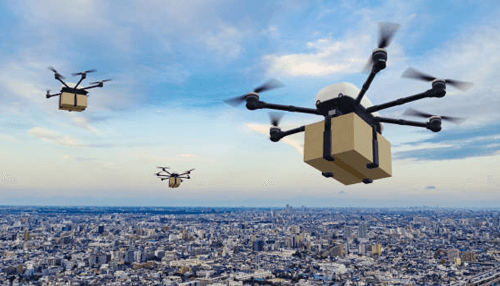AI and ML-based solutions can give e-commerce businesses a significant competitive edge. From this article, you’ll get to know about the most meaningful trends in the sector. The importance of AI trends in retail and e-commerce sphere is increasing every year. In this article, we’ll list the most important AI- and ML-related trends that will be shaping the industry.
Artificial Intelligence and Machine Learning Will Become an Integral Part of the Retail Sphere
Many retailers already rely on AI- and ML-based solutions — but many other businesses have not yet integrated these technologies. Shortly, more and more companies will employ AI to help them with the following tasks:
- Behavioral analytics
- Image recognition
- Inventory management
- Automation
AI can quickly analyze large amounts of data, such as customers’ demography, and search history. and buying history. It can suggest goods and services to clients and generate insights for businesses. AI can personalize the customer experience so it will be far less likely to make mistakes, compared to human professionals.
Customizable Products
Retailers strive to better understand the demands and preferences of their target audiences. Online stores offer interactive content to consumers. People can customize products before ordering them — for instance, you might be able to modify the design and color scheme of a pair of sneakers. Customers appreciate this opportunity. They will likely return to this store and recommend it to their friends.
Besides, retailers can conduct product-related surveys, quizzes, and online interactive sessions to find out which products their target audiences love the most.
Voice Search for Online Browsing
Around one-half of digital consumers state that they would love to use voice search to purchase goods and services online. To make their online stores voice-search-friendly, retailers should integrate natural language processing technologies. Plus, they should employ AI and machine learning to compose answers to customers’ questions.
Implementation of Chatbots
Over 1.4 billion people from all over the world use chatbots already. Such bots come in handy for nearly any e-commerce sphere thanks to their following advantages:
- Chatbots are compatible with various platforms.
- Clients don’t need to wait until a human specialist attends to them.
- People can get a well-structured and comprehensive answer to any question in just one second.
- Chatbots can greet consumers when they enter the retailer’s site, suggest products to them, and inform them about discounts.
- Bots very rarely make mistakes.
- Bots can learn from previous conversations and use this data to personalize communication with each customer.
- People who don’t feel at ease when talking with other people report greater comfort when using bots.
- Businesses can use bots to gather feedback and analyze customer-related data.
To make the most of their chatbots, retailers should provide high-quality scripts for them.
Augmented and Virtual Reality
Virtual reality enables consumers to explore the products that they’re planning to buy in 3D format. Augmented reality allows customers to check how the product will look in a real-world environment — for instance, they can make sure the new sofa will fit nicely into their living room. Both technologies facilitate the process of making informed purchase decisions and boost client satisfaction.
The Emergence of Headless E-commerce
Headless e-commerce platforms offer individual backend and front-end layers. If you want to modify, for instance, the user interface on the frontend, it won’t affect the backend functionality. Thanks to such an approach, it should become easier for retailers to fine-tune the UI and UX of their sites.
They will be able to adapt the UI and UX to various channels with minimum effort (such as mobile format or social media). Plus, headless platforms facilitate the creation of SEO-specific content for online stores.
The Growing Popularity of Mobile Shopping
To make the most of mobile sales, retailers should do the following:
- Make sure their online stores are compatible with any possible smartphone or tablet, regardless of its brand and operating system
- Accept various payment methods in mobile format and provide easy checkout
Mobile devices are anticipated to account for nearly 2.91 trillion dollars in e-commerce sales.
Direct Shopping Through Social Media
Around 90% of consumers confirm that social media helps them make purchase decisions. Instagram is probably the best-adapted platform for direct online shopping. It offers a feature of “checkout on Instagram” that redirects consumers to product pages. Customers can pay for the product right through the social platform without visiting the official website of the online store.
Focus on Sustainable E-commerce Processes
Being sustainable means the following for an e-commerce business today:
- Support charities
- Donate part of the revenue to a cause
- Utilize renewable raw materials for manufacturing processes and packaging products
- Adopt electrical delivery containers instead of fuel-based trucks to deliver products to customers
Not every retailer can afford to meet all these criteria — but even if you focus only on charity and donations, that should produce a favorable impression on your clients.
Possibility of Drone Delivery
It makes sense to use drones if the retailer meets the following criteria:
- Has a large consumer base in the local area
- Plans to deliver lightweight products
- Can hire or outsource an expert in the field of drone technology
Drone delivery is still under the initial development phase. It might be too early to allow drones to cover large distances. Yet if a retailer starts to use drones for at least some part of its deliveries, it might both enhance customer satisfaction and attract media attention to that e-commerce business.
Final Thoughts
Hopefully, this article came in handy and now you better understand the AI-related trends that will keep shaping the AI e-commerce retail sphere in 2022. The role of AI and ML in retail will continue to increase. More businesses will implement AI-powered chatbots, voice search for online browsing, and virtual and augmented reality. Companies will allow clients to customize their products and will consider the possibility of drone delivery.
The sphere will be more focused on sustainability and use headless platforms. People will make purchases more frequently from mobile devices and through social media. The sooner your business learns how to benefit from AI in retail, the more revenue you should be able to make.





